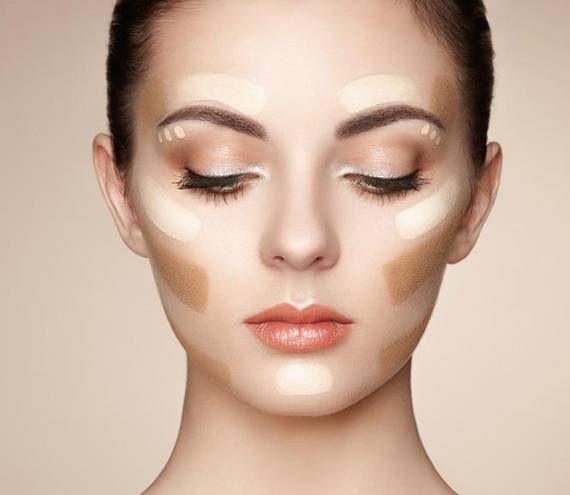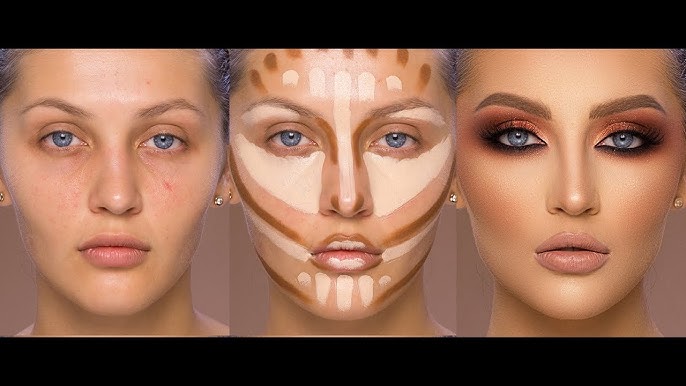A Step-by-Step Guide to Flawless Contouring and Highlighting
Contouring and highlighting have become integral techniques in the realm of makeup, transforming faces into sculpted works of art. Whether you’re a makeup enthusiast or a novice, mastering these techniques can enhance your features and create a polished look. In this comprehensive guide, we’ll delve into the world of contouring and highlighting, exploring the basics, tools, and tips to help you achieve a flawless finish.

Understanding Contouring and Highlighting
Contouring
Contouring involves using darker shades to create shadows and define certain facial features. Typically, contouring is applied to the hollows of the cheeks, along the jawline, on the sides of the nose, and along the hairline. The goal is to add dimension and sculpt the face, emphasizing its natural structure.
Tip: Choose a matte contour shade that is a few shades darker than your natural skin tone. This ensures a subtle and realistic effect.
Highlighting
Highlighting is the opposite of contouring, as it involves using lighter shades to bring forward specific features. Common areas for highlighting include the tops of the cheekbones, the bridge of the nose, the cupid’s bow, and the brow bone. Highlighting adds luminosity and draws attention to the high points of the face.
Tip: Opt for a shimmer or matte highlighter depending on the desired effect. Shimmer adds a radiant glow, while matte provides a more natural finish.

Tools of the Trade
Contour and Highlight Products
Invest in a quality contour palette that includes both contour and highlight shades. Cream and powder formulas are available, each offering different finishes. Creams provide a more dewy look, while powders are excellent for a matte finish.
Makeup Brushes
Essential brushes for contouring and highlighting include a contour brush, a fan brush for highlighting, and a blending brush. The right tools ensure seamless application and prevent harsh lines.
Setting Powder
A translucent setting powder helps blend and set your contour and highlight, ensuring longevity and preventing smudging throughout the day.
Step-by-Step Guide
Start with a Clean Canvas
Begin your makeup routine with a clean and moisturized face. Apply your foundation and concealer as usual.
Contouring
Using a contour brush, apply the contour shade to the areas you want to define. Remember to blend well to avoid any harsh lines. Common contour areas include the hollows of the cheeks, along the jawline, and the sides of the nose.
Highlighting
Apply the highlight shade to the tops of your cheekbones, the bridge of your nose, the cupid’s bow, and the brow bone. The goal is to enhance the high points of your face.
Blending is Key
Blend, blend, blend! Use a blending brush or makeup sponge to seamlessly merge the contour and highlight into your foundation. This step ensures a natural and well-integrated look.
Set with Powder
To lock in your makeup and prevent it from budging, set your contour and highlight with a translucent setting powder.
Additional Tips and Tricks
Less is More
Start with a small amount of product and gradually build up. It’s easier to add more than to remove excess.
Face Shape Matters
Tailor your contour and highlight to complement your face shape. Different face shapes benefit from emphasis on specific areas.
Experiment with Formulas
Try both cream and powder formulas to discover which works best for your skin type and desired finish.
Natural Lighting is Key
When applying makeup, natural lighting provides the most accurate reflection of how your makeup will appear throughout the day.
By mastering the art of contouring and highlighting, you can elevate your makeup game and accentuate your natural beauty. Remember, practice makes perfect, so don’t be afraid to experiment and find the techniques that work best for you. Whether you’re aiming for a subtle daytime look or a glamorous evening transformation, these techniques will undoubtedly become valuable tools in your makeup repertoire.
Disclaimer: The following statements represent my personal views, and you may hold different opinions.
-Images from Google
Recommended1 recommendationPublished in Makeup






